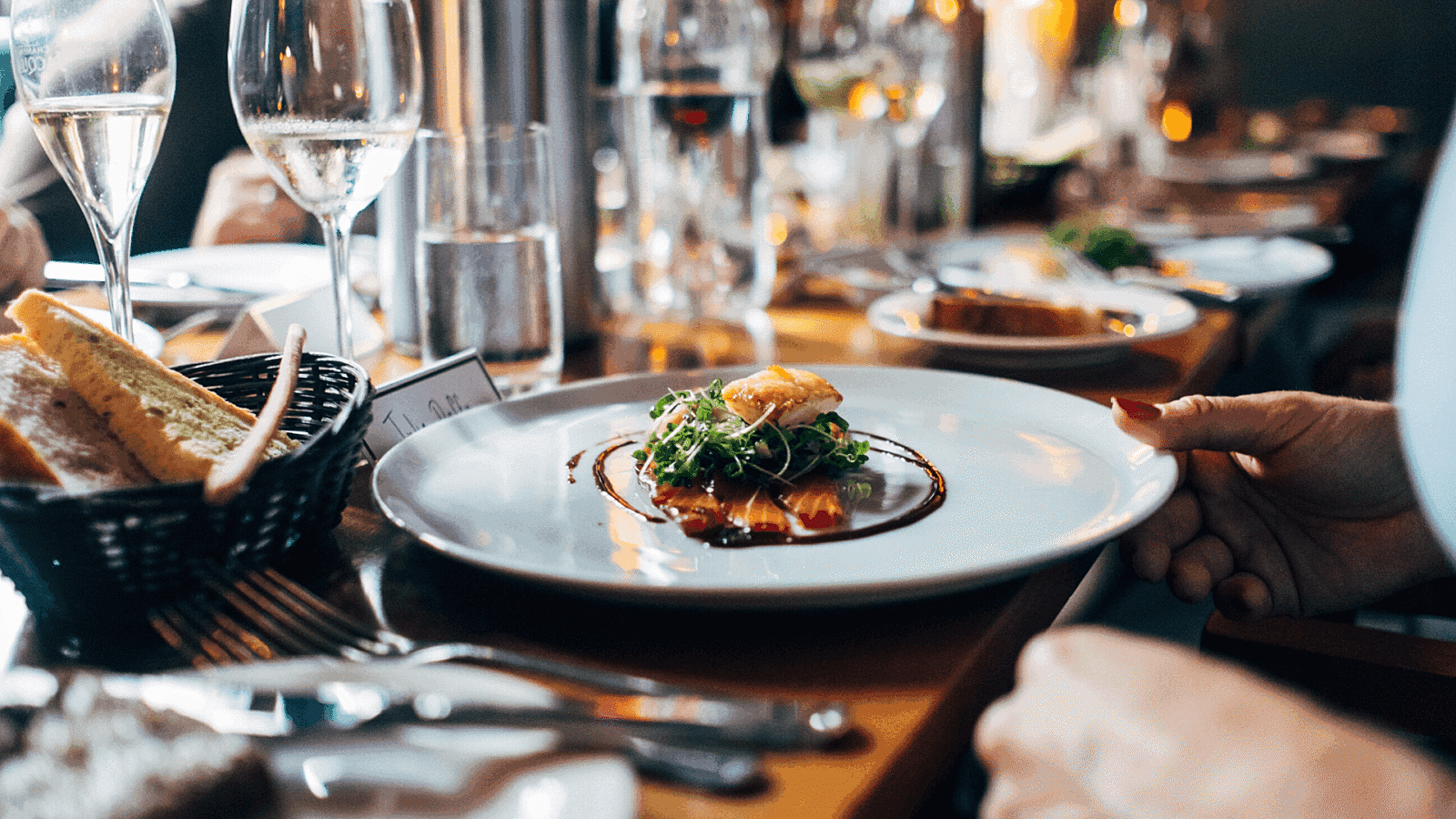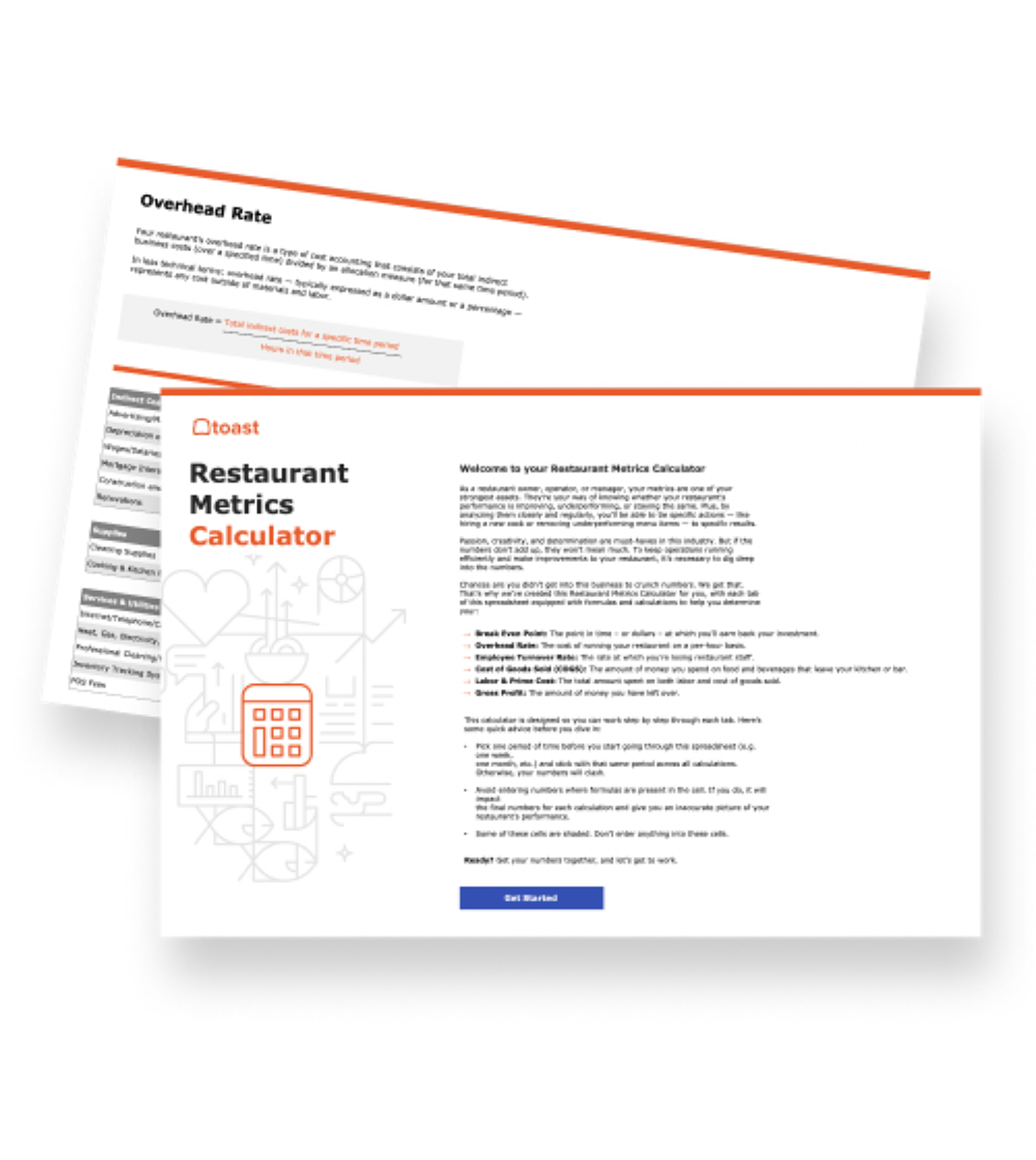
How Restaurant COGS Control Can Help Boost Profits
Calculating your restaurant cost of goods sold might seem like a pain, but it's an important part of making sure your business is healthy. Here's an easy way to calculate it.

Justin GuinnAuthor


Restaurant Metrics Calculator
Use this free calculator to calculate the key restaurant metrics needed to understand the health and success of your business.
Get free downloadCost of goods sold, or COGS, are the direct costs related to producing items sold by a company.
For restaurant COGS, this refers mainly to the ingredient costs for your menu items as well as the associated labour costs required to prepare these items — chefs, prep cooks, bartenders, etc.
Restaurateurs track their restaurant COGS to determine the general profitability of their business as well as the profit margin on individual menu items.
Regardless of your type of restaurant, tracking restaurant COGS is critical given the potential turbulence of the restaurant supply chain. This ability is a step toward truly taking control of restaurant costs and making data-driven decisions.
In this article you will learn how COGS can help you keep your business running efficiently. See how to calculate it manually and with automated systems, and explore tips for lowering your restaurant COGS.
Importance of COGS for your restaurant profit margins
Restaurant COGS refers to the cost of all the ingredients a restaurant uses in a given time period — as well as the labour associated with turning those raw ingredients into finished dishes sitting on the pass.
It's a critical metric used in the restaurant industry for monitoring and controlling restaurant costs. Your restaurant's COGS number changes over time, and you'll see a completely different number when comparing your COGS for one shift to your COGS for an entire year.
Calculating COGS requires you to track restaurant ingredient costs over a given amount of time. Tracking food costs can enable you to stay lean and keep costs low — allowing restaurant operators to save money on food inventory by identifying patterns and trends.
Restaurant COGS also depends on monitoring the labour costs associated with producing dishes over the same time period — meaning your back of house costs should be considered, but not your front-of-house labour.
Restaurant COGS can highlight what’s eating away at your gross profits
When building out your restaurant profit and loss statement, your cost of goods sold is subtracted from your gross revenue, since this is money that you either owe or have already paid — thus, higher restaurant COGS mean lower restaurant profits.
COGS tells you how much you are spending to make your food sales and drink sales across your restaurant operation — individual locations, shared concepts, or an entire portfolio.
The COGS/Sales ratio quantifies your spend relative to revenue. A lower ratio is preferred as it suggests you’re spending less to make more money. It’s generally a sign of good financial health.
COGS typically vary between restaurants depending on factors like size and concept.
Consider a fine dining restaurant vs. a fast food one. Fine dining generally has higher COGS because they use better quality, more expensive ingredients. This higher COGS isn’t necessarily alarming because they then charge a premium to more than cover these costs.
That being said, a good average COGS number to aim for is usually around 31%.
You can track COGS and COGS ratio over time to identify trends and determine if you’re in control of your costs.
For example, if COGS consistently rise for three months while turnover remains constant, you may have a problem. Maybe suppliers have increased their prices, and you haven’t adjusted yours. Perhaps food waste in the kitchen is higher than usual due to several new hires.
COGS is most definitely a critical restaurant accounting KPI, but it needs to be a starting off point and not your only metric — much like restaurant inventory turnover ratios, restaurants need more precise insights to accompany COGS measures.
Restaurant Metrics Calculator
Use this free calculator to calculate the key restaurant metrics needed to understand the health and success of your business.

How to calculate cost of goods sold for restaurants
Here’s a COGS formula you can use to calculate your restaurant cost of goods sold.
Beginning Inventory + Purchased Inventory – Ending Inventory = Cost of Goods Sold (COGS)
Let's break this down with an example:
Say you want to get a better idea of your inventory from last month. You had $3,000 of leftover inventory at the start of the month, including food, drinks, spices, and other materials — basically anything and everything it takes to get a meal on a plate and a drink in a glass.
Throughout the month, you ordered $8,000 of additional inventory and ended the month with $2,000 worth of inventory.
Now let's tie these number into the variables from the equation.
Beginning Inventory: $3,000
Purchased Inventory: $8,000
Ending Inventory: $2,000
Then, plugging those numbers into the restaurant cost of goods sold equation, we get :
Cost of Goods Sold = Beginning Inventory + Purchased Inventory – Ending Inventory
Cost of Goods Sold = $3,000 + $8,000 – $2,000
Cost of Goods Sold = $9,000
In this example, your restaurant's cost of goods sold — or the amount of money spent on food and drink served in your establishment during the month — reaches a total of $9,000.
A good restaurant COGS rate is half your prime costs
A good average COGS number to aim for is between 30-35% — or about half of your prime costs.
You can track COGS and COGS ratio over time to identify trends and determine if you’re in control of your costs.
For example, if COGS consistently rise for three months while inventory turnover remains constant, you may have a problem. Maybe suppliers have increased their prices, and you haven’t adjusted yours. Perhaps food waste in the kitchen is higher than usual due to several new hires.
COGS is most definitely a critical restaurant accounting KPI, but it needs to be a starting off point and not your only metric — much like restaurant inventory turnover ratios, restaurants need more precise insights to accompany COGS measures.
Don’t let your restaurant COGS be a broken cog in your profitability
COGS is a great high-level, actionable measure for your food costs, though restaurants may benefit from a more precise, detailed overview of their spending.
Even with our formulas and synopsis above, manually tracking restaurant food costs has typically been time-consuming and error prone.
Restaurant operators can consider implementing a few restaurant management tactics to help lower cost of goods sold and boost their bottom lines.
Optimizing inventory management to reduce COGS
Restaurant inventory management is the foundation of your COGS calculation. Beyond calculating COGS, food inventory tactics can help operators make more informed decisions about supplier orders and ingredients to stock, portion size control, and food waste and spoilage.
Restaurant inventory management can be crucial for restaurant success — contributing to your food cost control.
Implementing consistent, reliable inventory counts can help you see the supplies come into your restaurant, which and how many ingredients leave your kitchen during a service, the total amount of inventory leftover after each service, and what’s wasted along the way.
Without knowing these exact numbers, you won't be able to understand where your supply (and money) is going.
Tracking food cost percentage
It's critical that restaurant owners, operators, and managers consistently track food cost percentages and the right mix of technology to take control of costs and lay the groundwork for optimizing restaurant profits.
Food cost percentage is calculated by taking the cost of goods sold and dividing that by the revenue or sales generated from that finished dish.
Achieving close to real-time recipe costing
The right mix of restaurant technology can help operators understand gross profit, net profit, and total costs at the individual restaurant menu item level.
Invoice automation can be an unsung hero here. Cost control tools such as xtraCHEF by Toast, empower restaurant owners to go beyond spreadsheets and automatically process supplier invoices so that ingredient prices are pulled into the system to update recipe costs.
This is an incredibly nuanced and detailed process, but the results can help propel your restaurant business to sustained success with lower costs, higher total revenue, and a lovely gross profit margin.
Implementing ongoing menu engineering to lower COGS
Menu engineering is an effective, scalable process for balancing your menu between popularity and profitability. The goal is to harmonize costing and pricing information with your restaurant vibes and brand.
You can use sales data as well as knowledge on COGS and other attributable restaurant expenses to rank menu items. This ranking enables you to matrix menu item popularity with menu item profitability. With that matrix, you can conduct forecasting exercises to understand what combination of menu items can create the best blend of total sales, lower COGS, and overall profitability.
Point of sale (POS) system built for restaurants
Your point of sale (POS) system is the foundation of your restaurant technology stack. It’s purpose can extend far beyond inputting orders processing transactions.
Your POS system can unlock tons of cost control and forecasting insights if it has key integrations with invoice processing, inventory management, and similar tools.
You can combine sales data from the POS with these costing insights to start making more informed decisions.
Related Resources
Restaurant Metrics Calculator
Use this free calculator to calculate the key restaurant metrics needed to understand the health and success of your business.

Is this article helpful?
DISCLAIMER: This information is provided for general informational purposes only, and publication does not constitute an endorsement. Toast does not warrant the accuracy or completeness of any information, text, graphics, links, or other items contained within this content. Toast does not guarantee you will achieve any specific results if you follow any advice herein. It may be advisable for you to consult with a professional such as a lawyer, accountant, or business advisor for advice specific to your situation.
Subscribe to On the Line
Sign up to get industry intel, advice, tools, and honest takes from real people tackling their restaurants’ greatest challenges.
